Exploring Berlin (2 of 4)
Famous monuments and guided tours
Leaving the subject of tickets, getting around and "evil inspectors" to one side, which I spoke about in my previous post, I will now talk to you about our true experience in Berlin.
The beginning of our adventure started in an unusual way: an exam. That's right, when we booked the flights and we had everything ready for the trip, I remembered that I still had an exam to do, and when I checked the date, it turned out that on our first day in Germany, I was going to have to start the day in the worst way possible at 9 o'clock in the morning. It was an exam for my Open University degree, which I had to go to the Spanish Embassy in Berlin for.
As always, you have to find the positive side to everything, and right in front of the embassy, we found one of the most charming places in the city: the park, although some would call it a forest, Tiergarten (Tiergarten station), in front of the Brandenburg Gate. This enormous green area, which was used as a hunting ground in the past for the crème de la crème to enjoy, is what the Berliners would say is the equivalent of Central Park for the New Yorkers. For me, this place was just what I needed to help me get over this dreadful exam I had just finished, it was a traumatic experience to go through whilst you're on holiday. By the way, a day later I got the results... I passed!
Anyway, did you know that in the Tiergarten there's a nudists' area? We didn't see it (although we weren't looking for it), but according to some comments online, it's a very popular place when it's sunny. And in Berlin, no such thing is impossible.
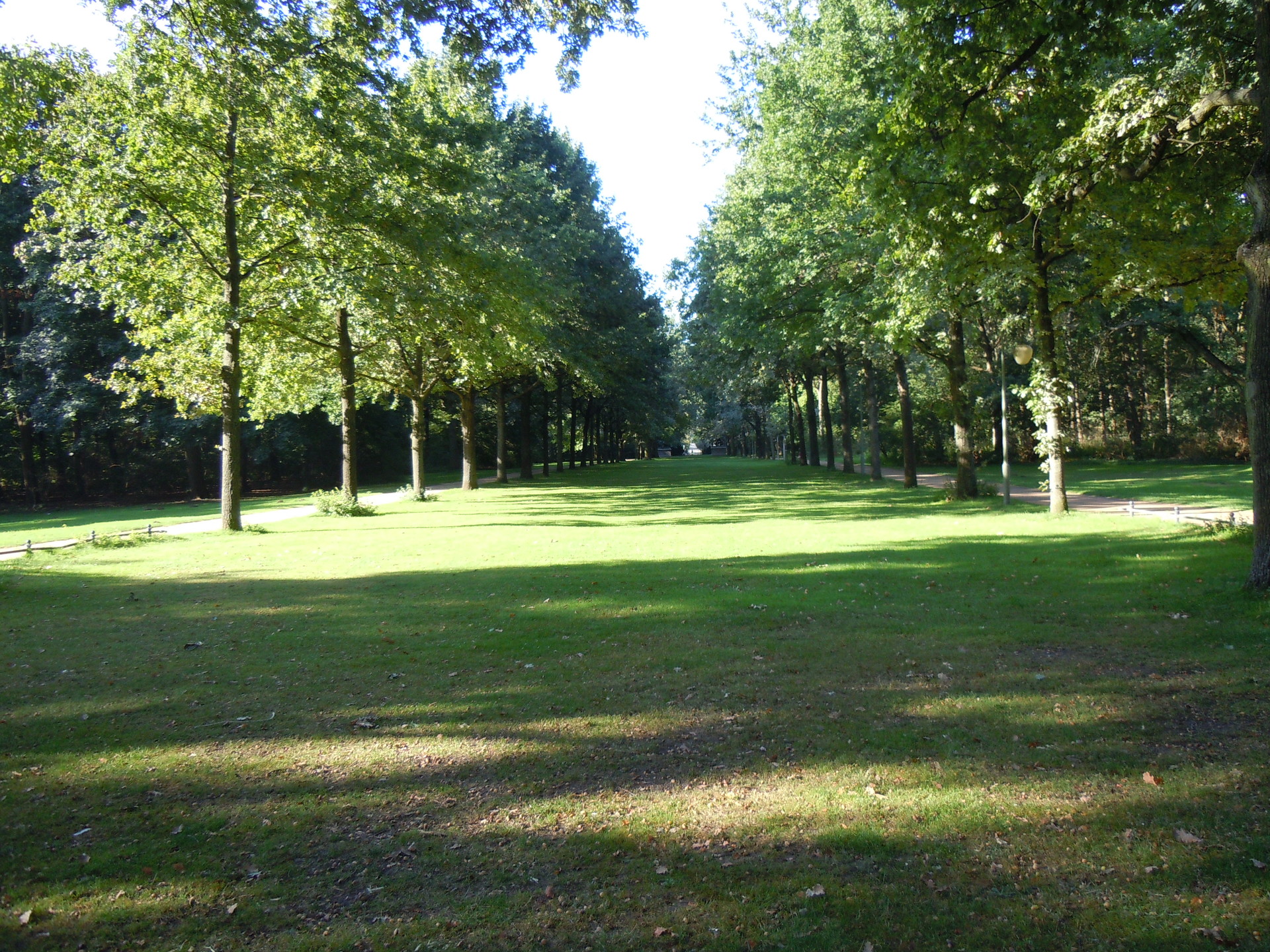
An area in the Tiergarten park
By exploring the area, we came across Berlin Zoo (Zoologischer Garten station) and, a little further, an area full of shops (Kurfürstenstraße station). It's a very busy shopping street in the west part of the centre in Berlin (Ku'damm) and there are two churches I will point out: the Kaiser Wilhelm Church, that after the bombings during the Second World War, was practically left in ruins and they had to reconstruct it, and the modern New Church. The latter, although it looks quite dark and serious at first sight, when you go inside there are blue stained-glass windows which make the room very bright and beautiful.
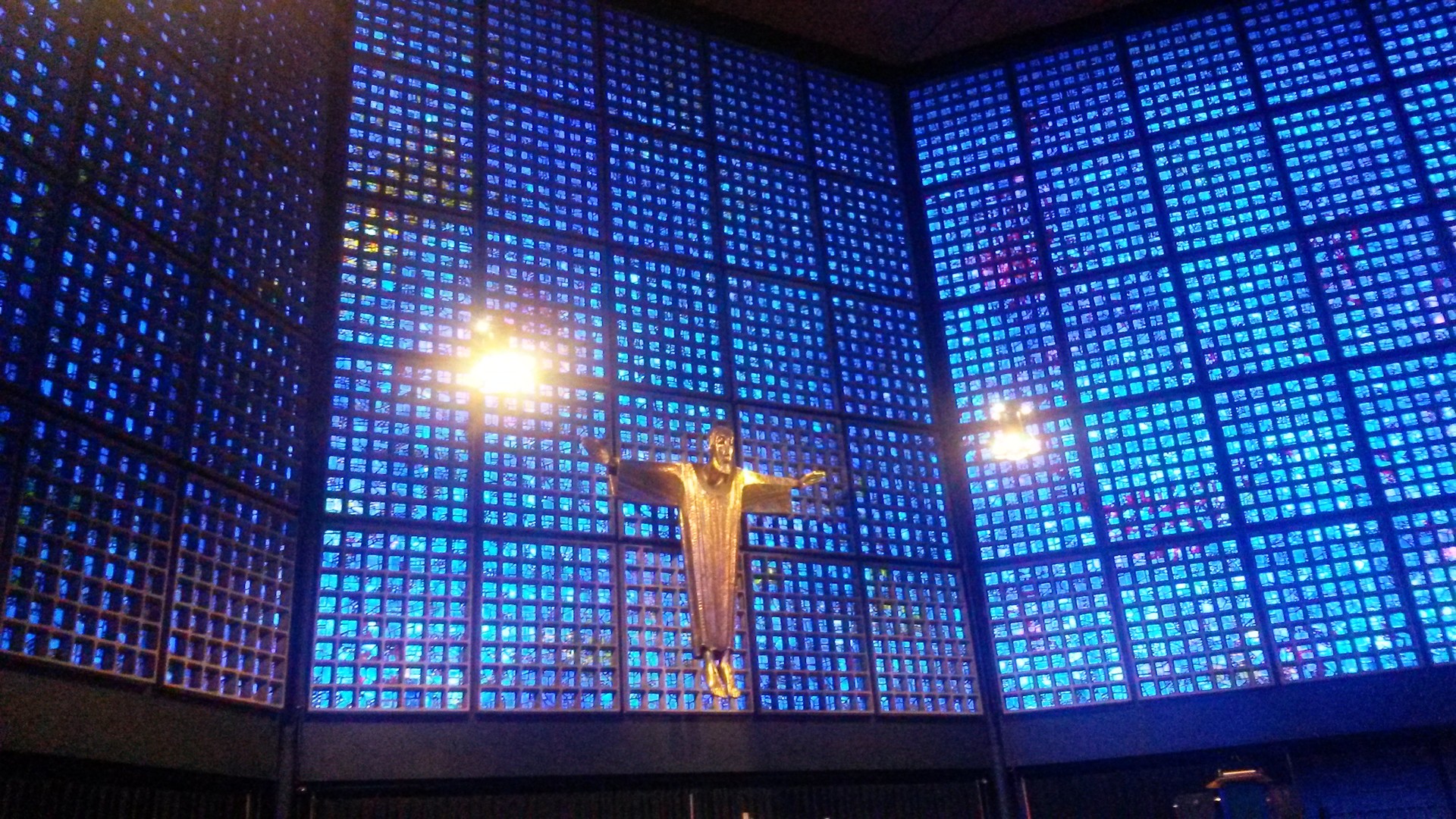 Inside the New Church
Inside the New Church
On the same day, in the afternoon, we decided to go on a guided tour around the city just to know where all the main places are, and to get our bearings of all the monuments and most famous places in Berlin. The tour was free (at the end of the tour, everyone pays the guide however much money they wish as a donation, rating the quality of the tour). In general, we absolutely love this kind of way of getting to know a big city. Firstly, because it's someone's way of making a living and there are lots of people who work as a guide, even people who are close to home. Secondly, because it's normally a good way to have an introduction on the history of the place in question, in a short amount of time. Once you know the essential information, you can go back to whatever you were interested in most and the tourist map makes it easy to do so.
The most interesting place for us was the Brandenburg Gate (Brandenburgen Tor station). From there, there are many squares and streets, although I'll talk about two of the places in specific.
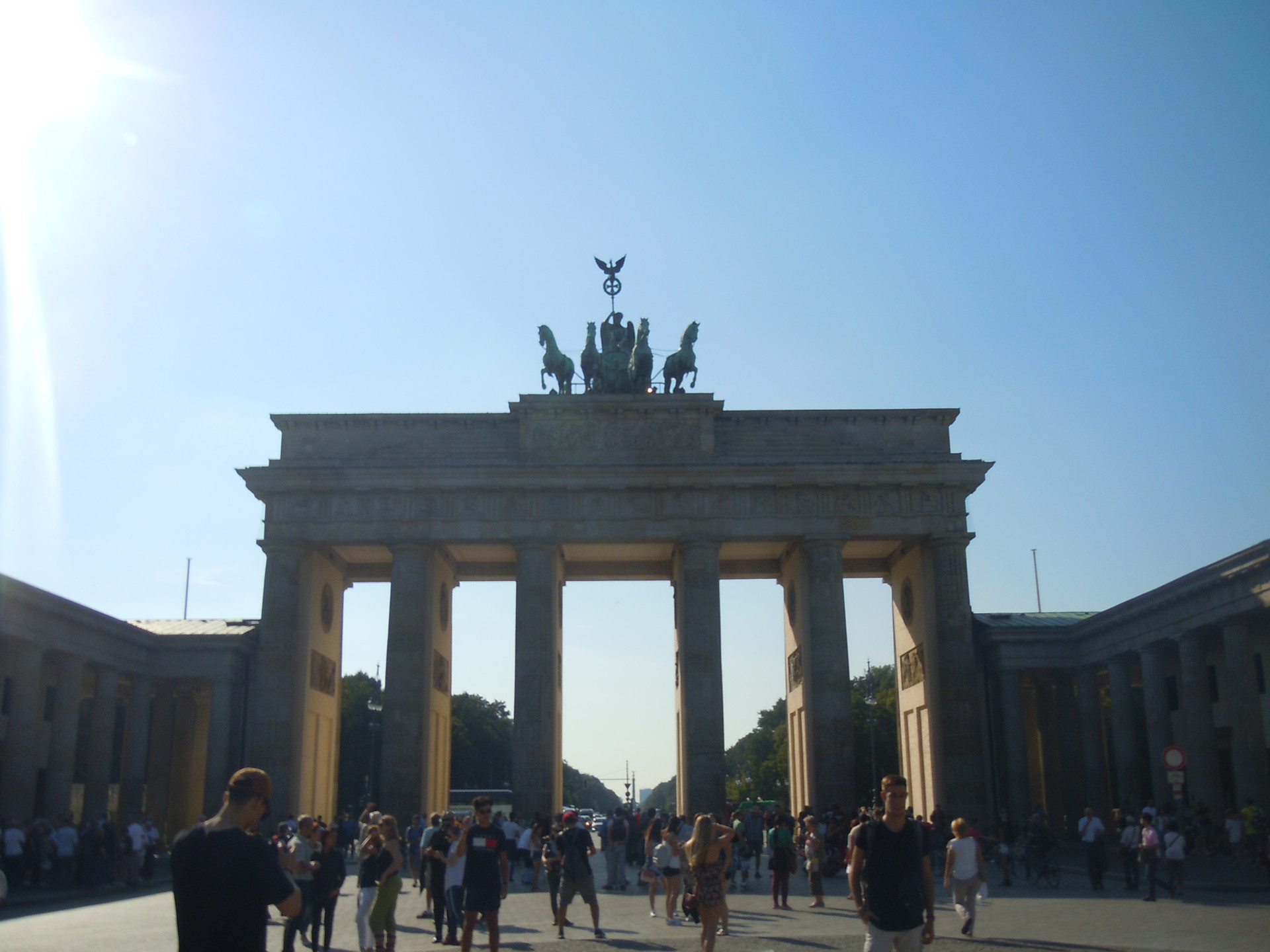
Brandenburg Gate
Firstly, the symbolic Holocaust Memorial, which is so controversial due to its construction and the companies who participated in it. This landmark is dedicated to the memorial of all the Nazi victims. There's no better word than "distress" to express the feeling you get when you see all the concrete gravestones all put together and you're walking in between them. There are more than two thousand seven hundred stones, of all different heights but the same width, which creates a sort of labyrinth on a playing field. This place turned out to be very stressful.
In the area, there are always one or two police officers, who guard the monument, making sure that visitors don't stand on the stones or jump from one to another.
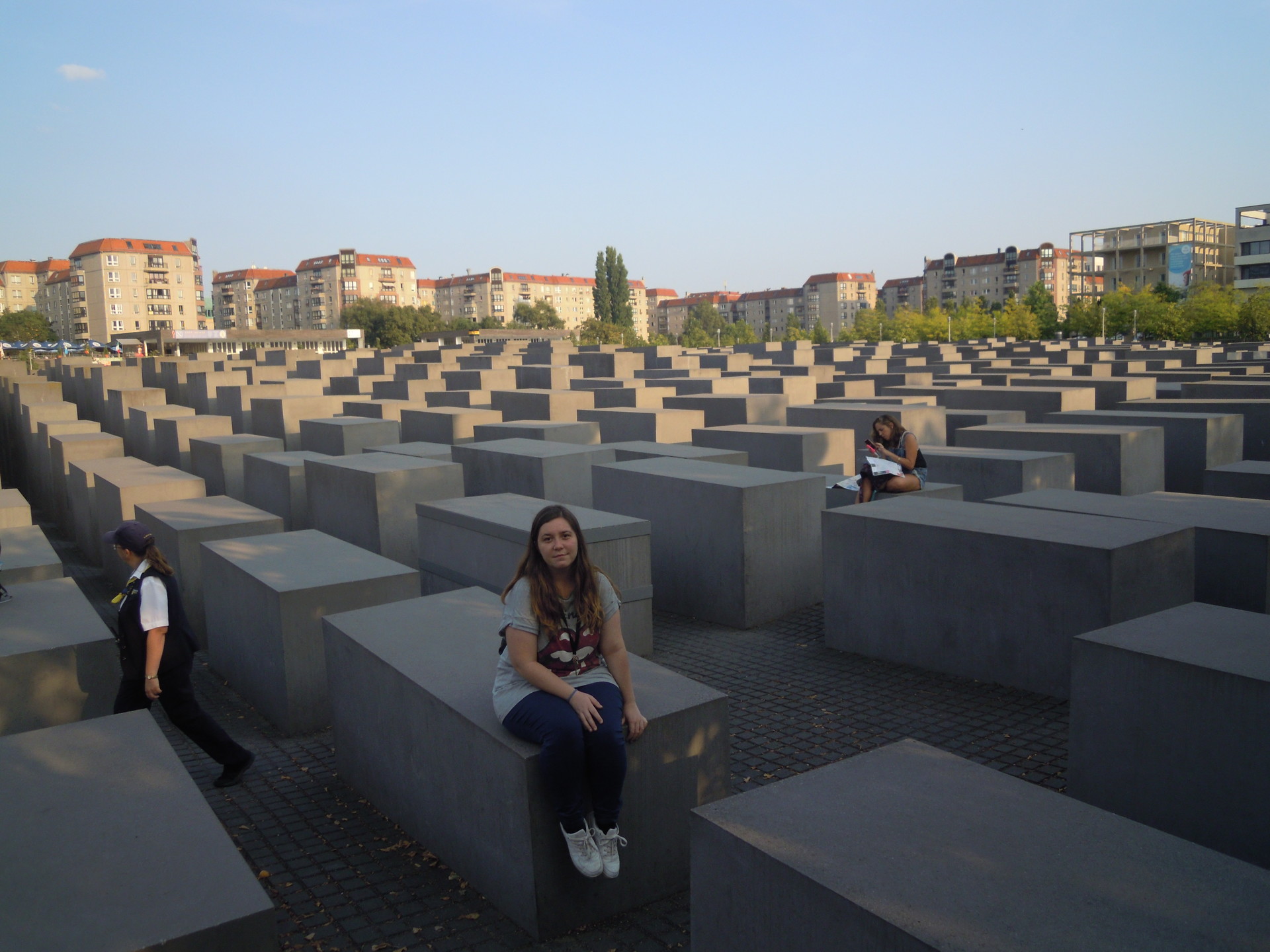
The Holocaust Memorial
On the other hand, although this has nothing to do with the Holocaust, there's a special place I often remember because it really caught my attention and it was a real delight: the chocolate shop Fassbender & Rausch (Stadtmitte station), where you can find lots of objects and monuments made of chocolate, such as boats, the Reichstag (Parliament) and the Brandenburg Gate. There's so much variety of chocolate... yum, yum!

The Reichstag made of chocolate
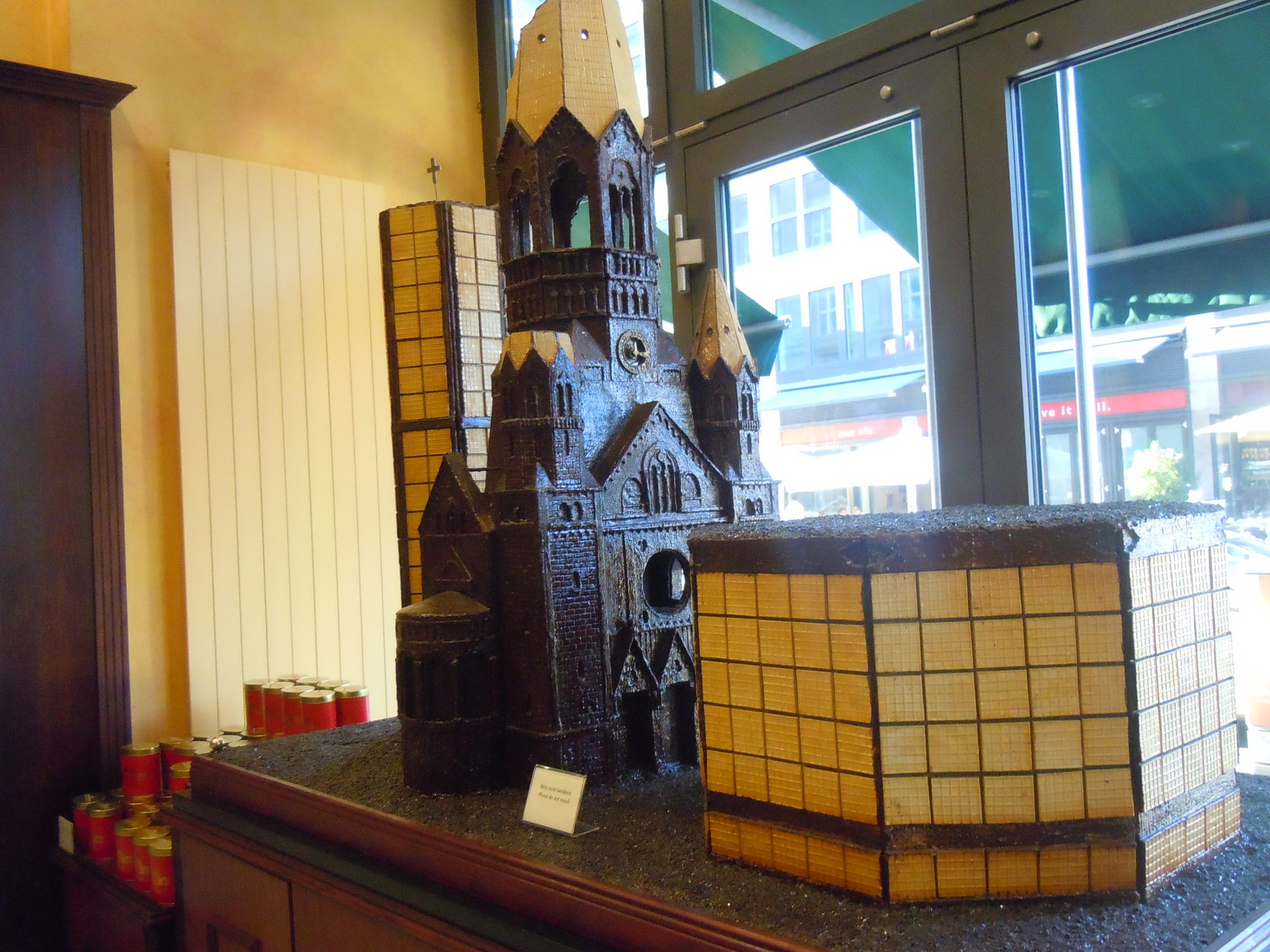
The Ku'Damm church made of chocolate and biscuits
After we saw the chocolate shop, we decided to go through the famous Alexanderplatz (a square) and, without wanting to sound rude, I honestly didn't like it at all. It's true that it had a lively atmosphere, but it was really dirty and chaotic. Only metres away, there's a popular area called Nikolaiviertel, where not only are there countless places to eat or have a drink, the area was almost destroyed during the Second World War and, during its reconstruction, they tried to keep it the same as how it looked before, so it's interesting because it has a Medieval feel to it. It's also interesting because it's a shock to see the Hemp Museum right there.
The next day, we signed up to a guided tour to find out more about the history of the Berlin Wall and about the Cold War. This tour was also free. As well as visiting the Wall (Bernauer straße station), the guide took us to the East Side Gallery (Ostbahnhof or Warschauer Straße station). Given that these places are far from each other, you have to take the metro.
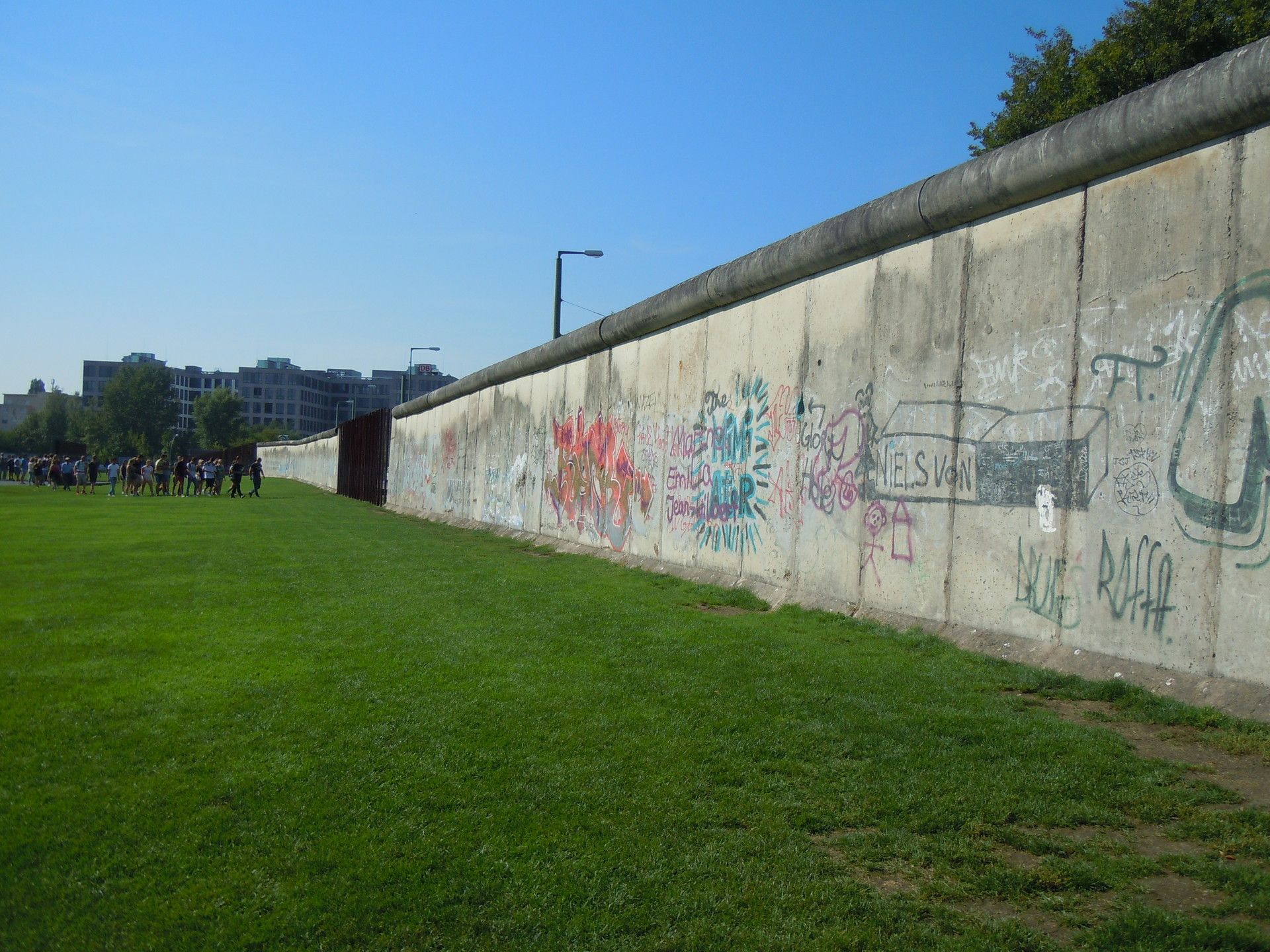
Part of what's left of the Berlin Wall

The Berlin Wall and the Watch Tower
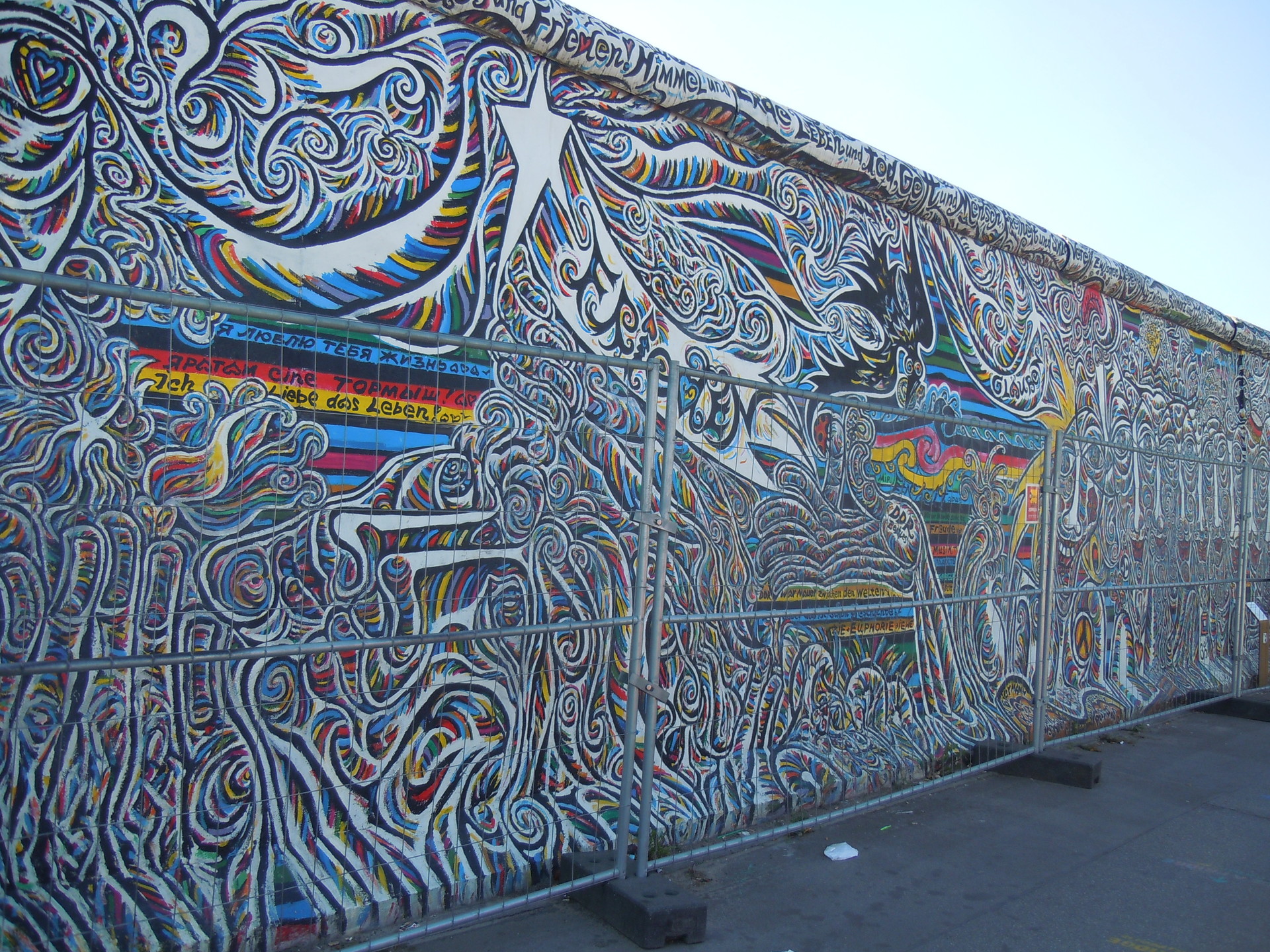
Part of the East Side Gallery
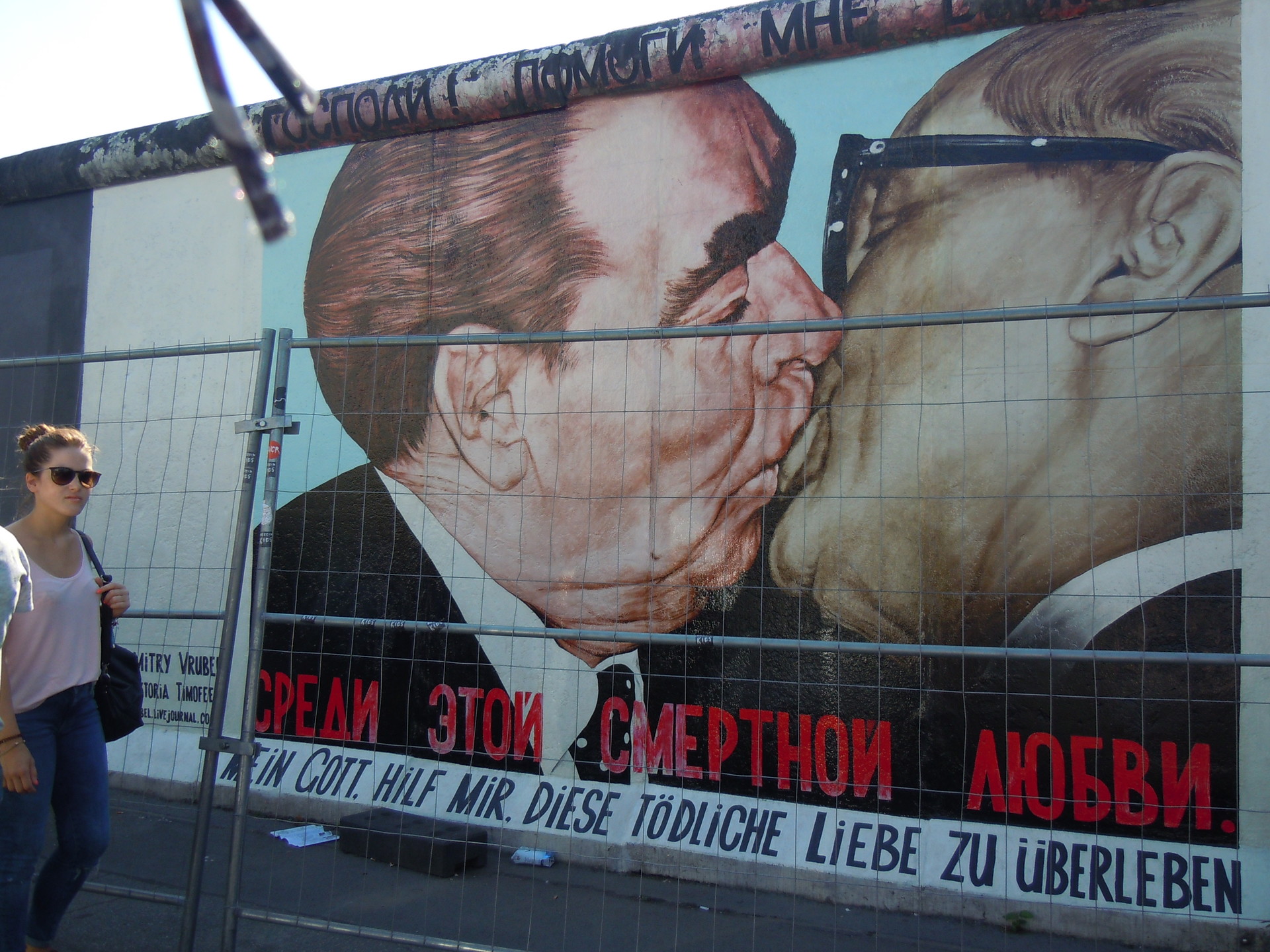
The wall showing the famous kiss between Honecker and Breznev, East Side Gallery
Another themed tour we really enjoyed, which this time we paid for, was Third Reich tour. To go on this tour, we had to get around on public transport. We paid 12 euros and it was definitely worth it. We went to places such as the Victory Column (Tiergarten or Hansplatz station), the Soviet War Memorial (Treptower Park or Plänterwald station) and the Parliament or Reichstag (Bundestag station). The last place on the tour, where we spent the whole afternoon, was the Topography of Terror Museum (Kochstraße or Anhalter Bahnhof station). This museum is free, and it turned out to be incredibly interesting. It has photos, cards, testimonies and different documents on Hitler's rise to power and the consequences. It's an authentic display of his collection and shocking information.
We also went on an underground tour (Berliner Unterwelten; Gesundbrunnen station), which I really recommend. It's an underground tour of the city where you visit air-raid shelters, bunkers and metro stations amongst other places. There are various routes you can take, and although we only did one of them, I'm sure that they're all worth doing. The price of the visit ranges from 10 to 15 euros, depending on the tour guide and the discounts (there are discounts for students, and groups for example).
Photo gallery
Content available in other languages
- Español: Descubriendo Berlín (2/4)
- Italiano: Alla scoperta di Berlino (2/4)
Want to have your own Erasmus blog?
If you are experiencing living abroad, you're an avid traveller or want to promote the city where you live... create your own blog and share your adventures!
I want to create my Erasmus blog! →


























Comments (0 comments)